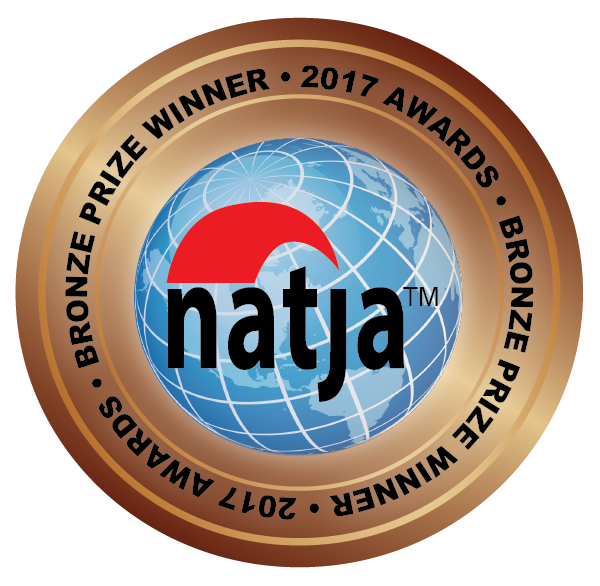Picture this:
It’s 2am and I’m in a tent pitched on snow. I haven’t felt my fingers or toes in a few days. My head hurts. I’m coming down with bronchitis. I’m clutching a hot water bottle inside my sleeping bag but still shivering too hard to sleep. At least I’m excited to be getting this journey over with tomorrow.
But first I’m awake through yet another endless, lonely night. And I’ve drunk too much water in hopes of avoiding altitude sickness. I fumble for my headlamp, then get my Sani-Fem Freshette from its sticky Ziploc and take care of business. I’ve definitely had too much water. My pee bottle overflows. I mop up the mess with some pants. I’ve had some bleak, embarrassing moments lately, but this is a new low. I wonder why I’ve paid for this misery.
I could have just gone to the Bahamas for my birthday.
Except that two years earlier, my life had exploded. In February, I had a dream job as a travel editor; I was married to a lovely man who my friends and family thought was the best thing that ever happened for me; and I lived in a sun-drenched loft in the East Village of New York. By September, I was trying to respect (and support) myself as a freelance writer and blogger, in the messiest part of a divorce, and crying on the kitchen floor of my tiny new apartment in Brooklyn, which I would be sharing with a stranger and which I quickly named Fort Squalor.
And then I turned 39. I was staring at 40. Middle age. And this wasn’t the life I was supposed to be leading. I wasn’t ready to think about 40.
I was doing everything you do when you’re 25. I was living in the cheapest apartment I’d ever had, having late-night conversations with my 20-something roommate, traveling, blogging, and dating, shall we say, enthusiastically.
In the midst of my forced reinvention, I had as much freedom—and fear—as I’d had at 25. Maybe I didn’t quite look 25, but a lifetime of sunscreen vigilance had paid off. Nothing in me identified with 40.
And so. What now?
My birthday gift to myself for 39 was the deposit on a trip to climb Kilimanjaro. I wanted to turn 40 on the mountain. It would be my “Eff you, 40” climb, proof that I was still gutsy, fit, vital, strong, slightly crazy, and young. It would show that in spite of losing my job, my marriage, and my home, I was still standing. Not just standing—but standing atop a 19,340-foot summit.
I wasn’t a serious hiker, and certainly no mountaineer. I grew up in New Mexico, with mountains in my front yard, and I’d climbed a 14-er at camp in Colorado, but it wasn’t until my 30s that I started to enjoy hiking. I was still pretty casual about it, taking the occasional day hike in the Hudson Valley, hitting the trail on a work trip, or walking bits of the Appalachian Trail with a friend who’s section-hiking the whole thing. Everyone on the AT gets a nickname, and mine is Girlie Badass. A fellow hiker promptly said, “I get the girlie, but….”
That said, one of the most exhilarating afternoons of my life had seen me at the top of a minor peak in New Zealand’s Southern Alps. I’d been coaxed up there by my guide, a real badass mountain man who leads trips to summit Everest. I hadn’t thought I’d make it up the icy scree, but there I was, posing with my poles in the air for a photograph that still hung in my bedroom eight years later. The 360 view was tremendous, but what intoxicated me was the adrenaline around my sense of accomplishment and my surprise at myself.
That afternoon had gotten me started thinking about Kilimanjaro. I wanted that same rush, but stronger. I wanted to be challenged more, to push myself further outside my comfort zone (which, after 12 years of writing about luxury travel, was shamefully narrow), to have what everyone bills as a life-changing accomplishment. I wanted a bigger mountain.
Kilimanjaro is the easiest of the Seven Summits. The climb isn’t technical. It’s really just a walk-up, at least on the route most people use. The challenge is having the physical and mental stamina to keep plodding forward as the air gets thinner and thinner, and avoiding the altitude sickness that keeps about a third of climbers from reaching the summit.
That’s partly a matter of luck, but I improved my odds by booking with Wilderness Travel, whose relatively luxurious climbs follow the eight-day Shira–Western Breach route, rather than the crowded five-day routes that most operators use. The smaller elevation gains help you acclimate, which gives Wilderness a success rate in the high 90s.
And while I’d told myself I didn’t care about the luxury elements, I appreciated the tables and chairs in the dining tent, the chemical toilets, the pans of hot water for washing, and a crazy porter-to-climber ratio. We 12 pampered Americans were supported by a moving city of about 80 Tanzanian guides, cooks, and porters. They carried all of our gear and ten days’ worth of fabulous food. They practically carried me across one scary stretch.
The problem was that the slow route increased the part of the climb that was the hardest for me, sleeping alone in a tent on a freezing-cold mountain. Even with a kind porter to help me take off my boots, camping is camping. And I’d never done it before.
While I’d prepared for the trip, I’d focused on hiking. That’s something I know how to do and like doing. I’d bought every single item on the gear list. I’d done cardio. I’d known what each day would look like: walking, walking, walking, resting, and more walking. I’d understood the idea of taking one step at a time. But I hadn’t thought about the half of the trip that would be completely dark, when I wouldn’t be moving and making progress toward a goal. When I wouldn’t have anyone to talk to or any way to distract myself from the enormity of what I’d gotten myself into.
And so, after dinner the first night, I brushed my teeth and wriggled into my sleeping bag. I tried to write in my journal or read my book but gave up because I was already too cold and needed to keep my hands inside the sleeping bag. I tried to sleep, panicked, completely lost it, and cried most of the night.
I remember thinking: I’m not going to make it. Who was I kidding? Why did I think I could do this? I’m a spoiled princess, not a girlie badass. This is only the first night and it’s just going to get colder and lonelier and harder. I’m going to fail. I hate failing. It’s going to be humiliating. I’ve been talking about Kilimanjaro for years. Everyone knows I’m doing this. It’s my Facebook status. It’s my out of office message. It’s going to be awful when I have to tell people that I didn’t make it. I’m going to lower Wilderness Travel’s high success rate. My return flight isn’t for another two weeks—what will I do between now and then? How will I ever get all this muddy gear clean?
But then I saw light coming into my tent and heard my porter say good morning as he delivered my tea. I had made it through the night. At breakfast, most of the other women confessed to having similar thoughts. One pointed out that while the guides would take us down if we were genuinely sick, they weren’t going to take us down just because we were uncomfortable. I found that strangely comforting. I was going to finish this because it would be my only choice. Kind of like my whole Brooklyn blogger reinvention thing, which I’d done because there was no alternative.
From there it got easier, though I still cried every night and occasionally during the day, when I panicked about losing my footing or thought of the magnitude of what I was doing. The terrain was beautiful and always different. The guides encouraged me, and my companions were interesting and lively, especially Susan, who had also just turned 40 after a tumultuous year and became my instant soul mate, and Candace, who inspired us both by uncomplainingly climbing the mountain at age 69.
The last full uphill day, though, was brutal. We started at 16,000 feet and climbed up icy boulders to 18,600, where we’d be camping on snow. It was dangerous enough that we had to wear helmets. There wasn’t enough air to walk, panic, and cry at the same time. When I lost my footing, I chose panicking and crying, and sat down on the frozen scree. I went sliding about ten feet before a guide pulled me up by the shoulders. He helped me to the designated rest spot to continue my meltdown; then I blew my nose, ate a Kind bar, and went back to climbing.
We summited under a bright blue sky around 8am New Year’s Eve. We hugged, high-fived, and posed for photos under the Uhuru Peak sign. I gorged on the exhilaration that I’d tasted five years earlier in New Zealand. I forgot all the mountain meltdowns and Freshette mishaps. I was happy about the fact that I’d have just one more night in a tent, and at a relatively warm, oxygen-rich 10,000 feet.
The very last morning, the guys in our support village sang their happy “you made it” song and we said our emotional good-byes to them. We were all going on to safari—where we would have actual plumbing and beds!—so our emotional good-byes to one another would come later.
No one talks about the inevitable let-down after a climb like this, but I was in a strange funk for a few weeks after my trip. I didn’t know what to do with myself. For all of the previous year, I’d been focused on this goal. I trained for it, saved for it, and psyched myself up for it. Now it was a new year and I’d accomplished it. I didn’t have anything new to reach for. It took weeks to get used to saying, “I climbed Kili” in the past tense. I’d never even called it Kili before my trip. I felt I had to earn the intimacy and the right to use the nickname. But now I had it, and so what?
I realized that I’d somehow thought I would Figure Everything Out on the mountain. I’d assumed some magical epiphanies would just happen to me. I’d imagined that I’d find purpose and direction for the second half of my life. But there was no time for all that. My mental energy was taken up by talking, concentrating on my footing, and the increasingly hard work of breathing. Just getting through a night was a triumph. I didn’t have the strength to soul-search on top of it.
It was only months later that I understood that the climb had taught me that I would be able to do whatever I’d have to do. It reminded me of the power of incremental progress, and the need to accept help. Maybe even to ask for it sometimes.
“Poly-poly” is what the guides constantly reminded us. Slowly, slowly. It pays to be patient and let things take time. And it’s important to work for them instead of expecting them to just come to me without any effort.
Since then, I’ve rebuilt my career, formed many deep friendships, had adventures in dozens of countries, and moved to Europe. I’ve grown into my girlie badassery. It hasn’t all been easy, but I’ve done it.
I still don’t feel like I’m in my 40s, but now I’m okay with feeling unsettled. I can trust that the dark nights will eventually pass.









